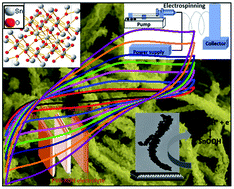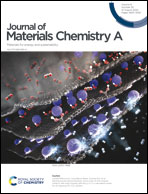A high energy density and high rate capability flexible supercapacitor based on electro-spun highly porous SnO2@carbon nanofibers
Abstract
The energy density of the present state-of-the-art materials remains the main challenge for commercial utilization of supercapacitor devices. Therefore, the development of highly active electrode materials with improved energy density, while preserving their exceptional power density besides introducing cost-effective and environmentally benign materials has recently become a major research interest. On this aspect, we present a cost-effective and highly efficient flexible supercapacitor based on SnO2@carbon nanofibers synthesized via the electrospinning of SnO2 precursor with PVP followed by calcination. The prepared highly porous, uniform, one-dimensional SnO2@carbon nanofibers without externally added activated carbon mounted on a carbon cloth substrate were used to fabricate a flexible supercapacitor. The fabricated supercapacitor exhibited a very high specific capacitance of 646.15 F g−1 at an energy density of 152 W h kg−1 (0.08 W h cm−2) and power density of 39 kW kg−1 (4.87 W h cm−2) at a very high current density of 60 A g−1. An asymmetric supercapacitor also depicts high energy density of 4.7 W h kg−1 (0.003 W h cm−2) at a power density of 3200 W kg−1 (1.67 W cm−2) and a current density of 0.2 A g−1. Furthermore, it displays an excellent cyclic stability even after 1000 continuous charge–discharge cycles at a constant but very high current density of 80 A g−1. The presented material shows the highest specific capacitance ever reported for electro-spun SnO2 nanofibers.



 Please wait while we load your content...
Please wait while we load your content...